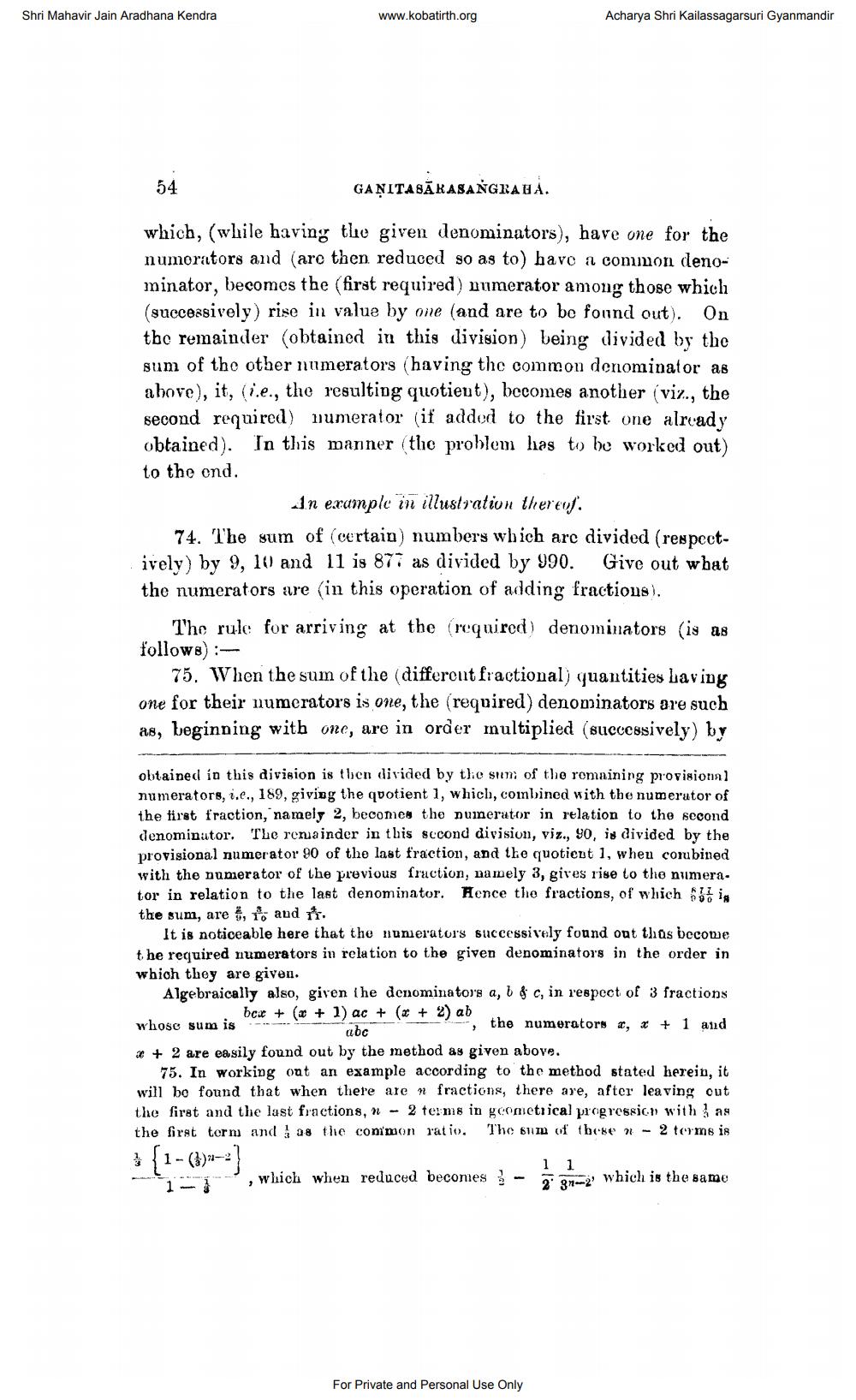________________
Shri Mahavir Jain Aradhana Kendra
www.kobatirth.org
Acharya Shri Kailassagarsuri Gyanmandir
54
GANITASĀRASANGRAUA.
which, (while having the given denominators), have one for the numorators and (are then reduced so as to) have a common denominator, becomes the (first required) numerator among those which (successively rise in value by one (and are to be found out). On the remainder (obtained in this division) being divided by the sum of the other numerators having the common denominator as above), it, (.e., the resulting quotieut), becomes another (viz., the second required) numerator (if added to the first one already obtained). In this manner the problem has to be worked out) to the end.
In example in illustration thereof. 74. The sum of (certain numbers which are divided (respectively) by 9, 10 and 11 is 877 as divided by 990. Give out what the numerators are in this operation of adding fractions),
The rule for arriving at the required) denominators (is as follows) :
75. When the sum of the different fractional) quantities having one for their numerators is one, the required) denominators are such as, beginning with one, are in order multiplied (successively) by
obtained in this division is then divided by the sum of the romaining provisional numerators, i.e., 189, giving the qbotient 1, which, combined with the numerator of the first fraction, namely 2, becomes the Duinerator in relation to the second denominator. The renainder in this second division, viz., 90, is divided by the provisional numerator 90 of the last fraction, and the quotient 1, when corubined with the bumerator of the previous fruction, namely 3, gives rise to the numerator in relation to the last denominator. Hence the fractions, of which is the sum, are $, *. and tr.
It is noticeable here that the numerators successively found out thas become the required numerators in relation to the given denominators in the order in which they are given. Algebraically also, given the denominator's a, b & c, in respect of 3 fractions
bc+ (+ 2) ac + (x + 2) ab , whose sum is
the numerators , 1 + abc
1 and * + 2 are easily found out by the method as given above.
75. In working out an example according to the method stated herein, it will be found that when there are fractions, there are, after leaving out the first and the last fractions, * - 2 terms in geometrical progression with 3 as the first tormi and as the common ratio. The 11 of these "-2 tome is
1
1
..
.
, which when reduced beconies
-
which is the same
For Private and Personal Use Only




